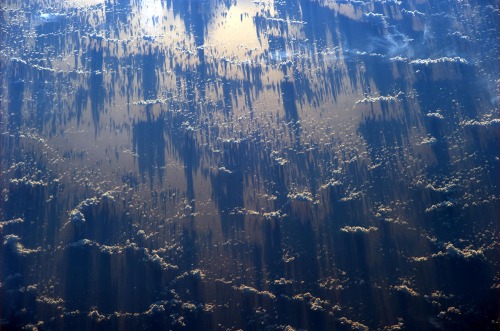I can’t even… So beautiful… So makes me wish I could go to space…
Wow (click on the image for a larger image).
This is:
“a near-infrared, color mosaic from NASA’s Cassini spacecraft shows the sun glinting off of Titan’s north polar seas. While Cassini has captured, separately, views of the polar seas and the sun glinting off of them in the past, this is the first time both have been seen together in the same view.
The sunglint, also called a specular reflection, is the bright area near the 11 o’clock position at upper left. This mirror-like reflection, known as the specular point, is in the south of Titan’s largest sea, Kraken Mare, just north of an island archipelago separating two separate parts of the sea.”
For a better look, please go to this link.











































